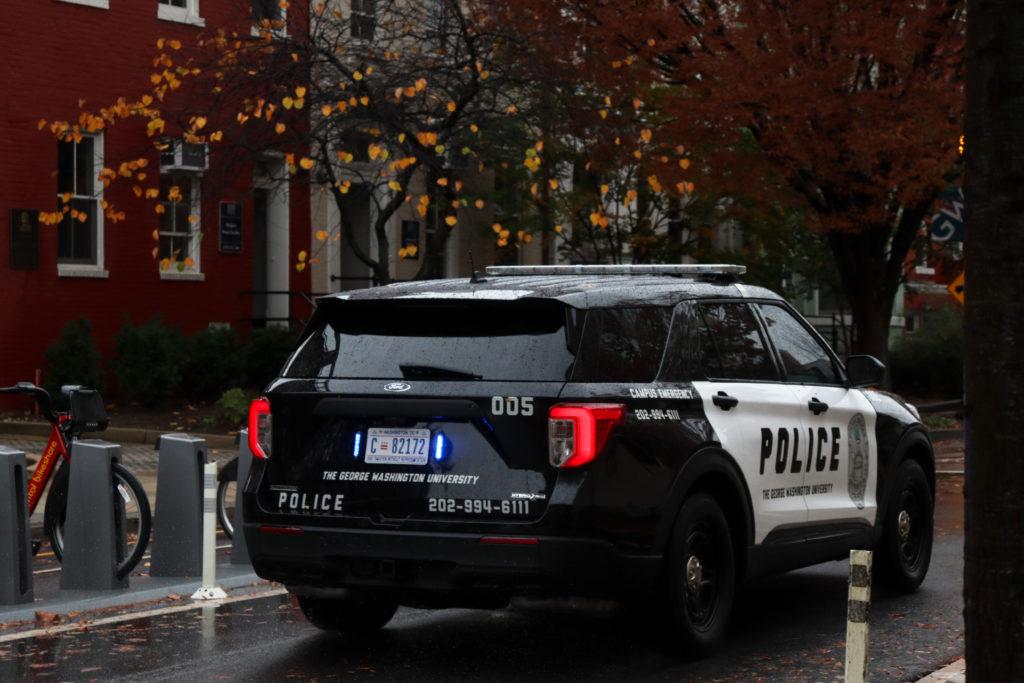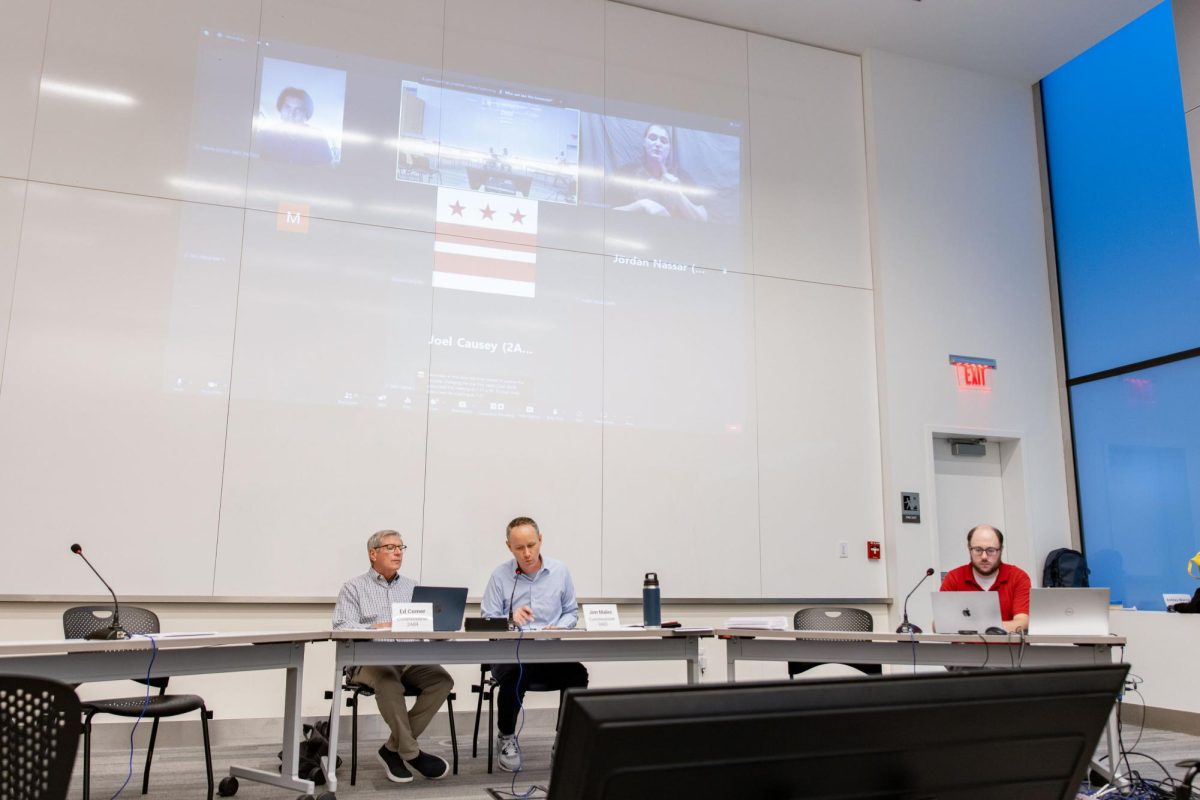Officials released a draft of the University’s implementation plan to arm some GW Police Department officers this fall.
Officials announced revised guidelines for using deadly force in the GWPD Use of Force Policy and updated training requirements for armed GWPD officers including a virtual reality simulator and a 56-hour firearms course to prepare for the University arming roughly 20 of 50 GWPD officers with 9 mm handguns this fall, according to a release late last month. Officials said they encourage GW community members to provide feedback on the “proposed framework” on a GWPD website form available until June 23, according to the release.
The Board of Trustees voted in April to begin arming GWPD officers ranking sergeant or higher in the fall to combat an increase in gun violence in educational institutions in the United States and accelerate campus police response times to campus emergencies.
Students and faculty called for the University to reverse the decision in the weeks after through protests, petitions, letters and signs, expressing concerns about its potential to reduce the safety of community members and people of color, who armed police are disproportionately more likely to use violence on, according to data from Everytown for Gun Safety, a gun control advocacy nonprofit.
“As we progress with our implementation planning, we are eager to continue to hear from students, faculty and staff regarding their reactions and suggestions,” GW Executive Vice President and Chief Administration Officer Sharon Reich Paulsen said in the release. “Comments already received have proven extremely helpful.”
In addition to a virtual reality training simulator and a firearms course, GWPD officers must complete an accredited police academy program prior to receiving weapons, according to GWPD Chief James Tate’s Hatchet op-ed last month.
The revised GWPD Use of Force Policy states that officers are only able to use deadly force on a subject when they “reasonably believe” deadly force is “immediately necessary” to protect the officer or other people and all other force options are “exhausted.”
When deciding whether to use deadly force, officers should determine if the subject possesses or appears to possess a deadly weapon, refuses to comply with an officer’s order to surrender their weapon and if they already engaged in methods of de-escalation – like waiting for more officers to arrive, taking cover, keeping a distance and attempting to calm the subject – or using non-lethal force, according to the revised policy.
The revised policy states that GW does not permit officers to use deadly force when the subject only poses a threat to themselves or property. The policy also prohibits officers from firing warning shots, firing from a moving vehicle and firing at a moving vehicle.
“GWPD requires that all officers use only that Force reasonable and necessary, based upon a totality of the circumstances, to effectively bring an incident under control while protecting the lives of others as well as the lives of the officers,” the policy states.
Officers who display or discharge their firearm outside of training or applies any other force must submit a “Resistance Response Form” and a use of force report for administrative review, which includes “facts and circumstances” of events where officers use force and a documentation of involved injuries, according to the policy. The policy states that the report findings help the captain of operations and chief of police decide whether the use of force was “justified” and within policy guidelines, with the Metropolitan Police Department working in conjunction for deadly force investigations as GWPD’s “lead investigative agency.”
The revised policy states that if an officer’s use of force causes death, officials will place the officer on administrative leave after complying with the the investigation and GWPD’s requirements until they determine the officer is fit to return to duty.
Officials said in the proposed framework that the independent review board to oversee the arming of GWPD officers that interim University President Mark Wrighton announced alongside the Board’s decision in April will include faculty, staff and “student representatives” and review firearm usage complaints.
GWPD will begin an annual use of force tracking report in the spring and continue annual statistical reviews for complaints against GWPD employees and demographics reports to ensure officers aren’t disproportionately targeting people of specific races, ethnicities or nationalities, according to the draft framework.
The release states that officials said GWPD will “increase feedback mechanisms” like community gatherings with GWPD employees and further its relationship with the University Division for Student Affairs and “student leadership.”
Officials said in the draft framework that GWPD will continue to review its existing de-escalation, mental health response, implicit bias and trauma-informed interview technique trainings. GWPD is also reviewing building security across campus, active shooter response training and its emergency notifications system, according to the release.
The release states that community members can email gwpd@gwu.edu with comments, concerns and questions after the feedback form closes on June 23.










